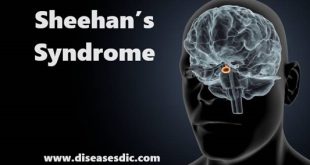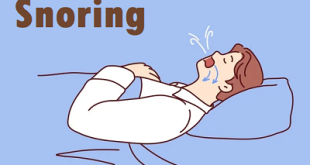Definition
Somatic symptom disorder is diagnosed when a person has a significant focus on physical symptoms, such as pain, weakness or shortness of breath, to a level that results in major distress and/or problems functioning. The individual has excessive thoughts, feelings and behaviors relating to the physical symptoms. The physical symptoms may or may not be associated with a diagnosed medical condition, but the person is experiencing symptoms and believes they are sick (that is, not faking the illness).
A person is not diagnosed with somatic symptom disorder solely because a medical cause can’t be identified for a physical symptom. The emphasis is on the extent to which the thoughts, feelings and behaviors related to the illness are excessive or out of proportion.
Epidemiology
The prevalence of somatic symptom disorder in the general population is an estimated 5% to 7%, making this one of the most common categories of patient concerns in the primary care setting. An estimated 20% to 25% of patients who present with acute somatic symptoms go on to develop a chronic somatic illness. These disorders can begin in childhood, adolescence, or adulthood. Females tend to present with somatic symptom disorder more often than males, with an estimated female-to-male ratio of 10:1.
Types of Somatic symptom disorder
Different somatoform disorders are distinguished by thoughts, emotions and actions related to somatic symptoms. There are seven types of somatoform disorders where individuals present with a multitude of clinically significant symptoms that cannot be explained, including:
Somatization Disorder
Somatization disorder occurs when a person continually complains of physical symptoms when there is no physical condition present to cause the symptoms. A somatization disorder diagnosis requires that a person must experience inexplicable physical symptoms that start before age 30, have symptoms that persist for several years and involve pain, stomach complaints, sexual issues and neurological problems.
Conversion Disorder
Conversion disorder occurs when physical symptoms mimic symptoms of a neurological disorder even though no neurological disorder is present. Symptoms may include paralysis, vision or hearing loss, or seizures. A conversion disorder is generally the result of trauma and impacts a person’s senses and movement.
Pain Disorder
Somatoform pain disorder is characterized by recurring pain in one or more parts of the body with no known cause. A pain disorder diagnosis is given when pain cannot be accounted for by a medical or other disorder, when pain causes considerable distress and when psychological factors play a significant role in the onset, magnitude and duration of the pain.
Hypochondriasis
Hypochondriasis occurs when a person believes that normal bodily signs or minor symptoms are evidence of a severe illness, even when medical tests and assessments prove otherwise. Physical symptoms may either be real or imagined. Hypochondriasis was removed from the fifth edition of the Diagnostic Statistical Manual of Mental Disorders (DSM-5) and replaced with somatic symptom disorder and illness anxiety disorder.
Other Specified Somatic Symptom and Related Disorder
Somatoform disorder not otherwise specified is a diagnosis used for symptoms that meet many — but not all of the required criteria for a somatoform disorder diagnosis. Presentations that may be specified using this designation include:
- Brief somatic symptoms disorder
- Brief illness anxiety disorder
- Illness anxiety disorder without excessive health-related behaviors
Unspecified Somatic Symptom and Related Disorder
Like the specific somatic symptom and related disorders diagnosis, undifferentiated somatoform disorder applies to individuals who have symptoms characteristic of somatic disorders that do not meet full criteria for any somatoform disorder. However, the unspecified somatic symptom and related disorder diagnosis should only be given in unusual situations, or in situations where there is insufficient information to make a more specific diagnosis.
Somatic symptom disorder risk factors
Risk factors for somatic symptom disorder include:
- Having anxiety or depression
- Having a medical condition or recovering from one
- Being at risk of developing a medical condition, such as having a strong family history of a disease
- Experiencing stressful life events, trauma or violence
- Having experienced past trauma, such as childhood sexual abuse
- Having a lower level of education and socio-economic status
Causes of Somatic symptom disorder
There are many theories about why somatization occurs. These theories involve:
Biological Sensitivity: A person may have a heightened sensitivity to certain sensations, such as pain or nausea. They may be more likely to attribute these sensations to illness. A person may also misinterpret psychological symptoms, such as anxious sweating, to a physical cause.
Trauma/Stress: Research shows survivors of trauma are particularly susceptible to somatization. Trauma can lead to high levels of cortisol and other hormones. These chemicals can weaken one’s immune system and cause physical symptoms such as dizziness.
The Unconscious: Somatization could be a defense mechanism, protecting the person from emotional overwhelm. Some psychological symptoms may be so overwhelming that a person cannot face them consciously. A person’s distress may then find an outlet through the body, converting to a physical symptom.
Cultural Attitudes: Some people may live in a culture that stigmatizes emotional distress. A person may receive more attention and sympathy when they present physical symptoms than when they report psychological issues. A person’s mind and body may “learn” to somaticize distress in order to get help.
Somatization may be caused by multiple factors. It could also have no perceivable cause. Regardless of why the somatization occurs, the symptoms are real and do cause distress. People experiencing somatization can get treatment by finding a therapist.
Symptoms
The main symptom of somatic symptom disorder is the belief that you have a medical condition, which you may not actually have. These conditions range from mild to severe and general to very specific. Additional characteristics include:
- Symptoms that aren’t related to any known medical condition
- Symptoms that are related to a known medical condition, but are much more extreme than they should be
- Constant or intense anxiety about a possible illness
- Thinking that normal physical sensations are signs of illness
- Worrying about the severity of mild symptoms, such as a runny nose
- Believing your doctor hasn’t given you a proper examination or treatment
- Worrying that physical activity will harm your body
- Repeatedly examining your body for any physical signs of illness
- Not responding to medical treatment or being very sensitive to medication side effects
- Experiencing a disability more severe than what’s generally associated with a condition
Somatic symptom disorder complications
Somatic symptom disorder can be associated with:
- Poor health
- Problems functioning in daily life, including physical disability
- Relationship problem
- Problems at work or unemployment
- Other mental health disorders, such as anxiety, depression and personality disorders
- Increased suicide risk related to depression
- Financial problems due to excessive health care visits
Diagnosis and test
There is no somatic symptom disorder test to specifically diagnose the condition. A doctor will likely discuss your symptoms and perform a routine physical exam. Doctors typically develop a diagnosis based on how much a patient’s obsession on symptoms disrupts their daily life and mental well-being.
A doctor might consider the following criteria when considering a diagnosis:
- Constant focus on the seriousness of the symptoms
- Excessive magnification of the severity of symptoms
- Long-term distress over personal health or symptoms
- Extreme amount of time and energy spent on concern over health and wellbeing
Additionally, your doctor may perform diagnostic tests for other medical conditions that might relate to your symptoms.
Possible conditions your doctor might explore:
- Fibromyalgia
- Chronic Fatigue Syndrome
- Multiple Sclerosis (MS)
- Lupus
- Irritable Bowel Syndrome
Treatment and medications
Treatment is quite challenging and difficult because patients with somatic symptom and related disorders typically are unwilling to admit that their symptoms are due to mental (psychological factor). They get angry with their doctors who are unable to find the cause of their complaints.
The first time the diagnosis is discussed (after the initial investigations have failed to show any definitive cause) is a key moment in the doctor patient relationship. It is important to describe the condition to the patient in a manner without reference to a psychosomatic illness.
The goal of therapy is to alleviate the symptoms and improve the quality of life and to resume the daily routine. The forms of treatment offered include psychotherapy and medication if applicable.
Psychotherapy
If the patient understands that his/her physical symptoms might be related to psychological distress and a high level of anxiety, then psychotherapy, also called talk treatment can help to improve physical symptoms.
Cognitive behavioral therapy
- Teaches how to reduce stress and cope with distressing physical symptoms. It reduces one’s preoccupation with symptoms.
- Teaches how to manage situations or activities that cause uncomfortable physical sensations. It changes ones negative thought processes and beliefs and improves the personality.
- Addresses anxiety, depression and other mental issues associated with the somatic symptom disorder.
Thus it improved daily functioning at home, workplace, interpersonal relationship,s and in social situations. The family may also be counselled so that the patient gets better support.
Medications
Medications do not play a significant role unless there is associated underlying anxiety or depression which may be treated with anxiolytics or antidepressants, respectively. Some specific conditions such as pain disorder and body dysmorphic disorder are treated with antidepressant drugs called selective serotonin reuptake inhibitors.
It may take several weeks for the medications to show any visible effect and the doctor or patient should not set unrealistic goals such as a cure.
A supportive relationship with an understanding health professional is the most important aspect of treatment.
Regular follow-ups are essential to review symptoms and the persons coping mechanisms.
Somatic symptom disorder prevention
Little is known about how to prevent somatic symptom disorder. However, these recommendations may help.
- If you have problems with anxiety or depression, seek professional help as soon as possible.
- Learn to recognize when you’re stressed and how this affects your body — and regularly practice stress management and relaxation techniques.
- If you think you have somatic symptom disorder, get treatment early to help stop symptoms from getting worse and impairing your quality of life.
- Stick with your treatment plan to help prevent relapses or worsening of symptoms.
 Diseases Treatments Dictionary This is complete solution to read all diseases treatments Which covers Prevention, Causes, Symptoms, Medical Terms, Drugs, Prescription, Natural Remedies with cures and Treatments. Most of the common diseases were listed in names, split with categories.
Diseases Treatments Dictionary This is complete solution to read all diseases treatments Which covers Prevention, Causes, Symptoms, Medical Terms, Drugs, Prescription, Natural Remedies with cures and Treatments. Most of the common diseases were listed in names, split with categories.







